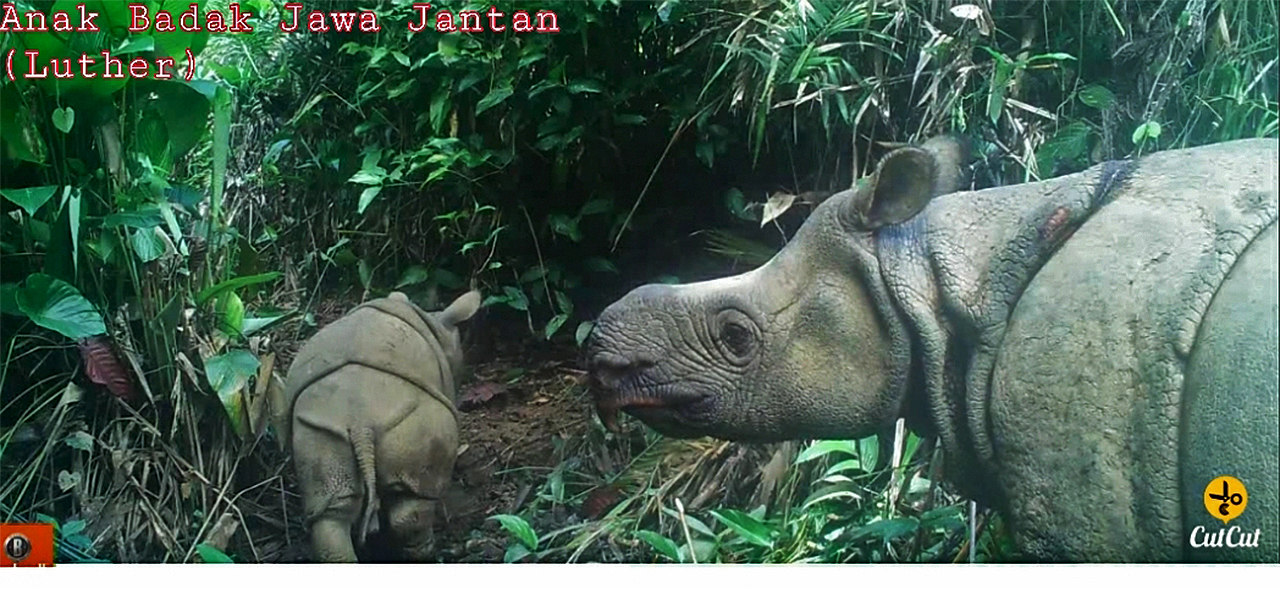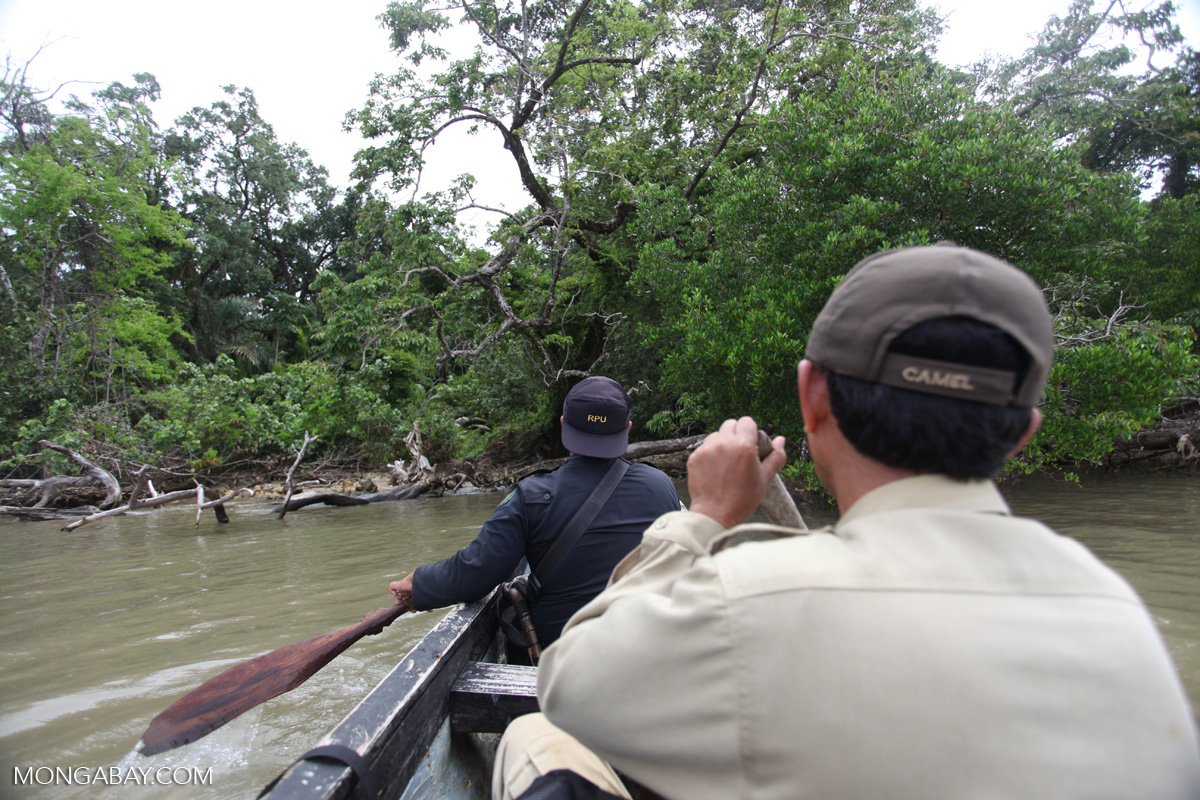- A poaching case currently pending in an Indonesian court shows that at least seven Javan rhinos were killed for their horns from 2019 to 2023.
- The only remaining population of Javan rhinoceros lives in Indonesia’s Ujung Kulun National Park, with an official population estimated at around 70.
- A suspect in this case has been arrested and an indictment has been issued, and three accomplices are still on the run.
- The revelations of the recent indictment raise questions about the security of the park, most of which has been closed to the public since September 2023 due to poaching concerns.
This was news that rhino conservationists had been dreading for a long time. Indonesian media reports that a poaching ring has killed seven Javan rhinos.Rhinoceros sondaicusand possibly more, from 2019-2023, potentially wiping out 10% of the total global population of endangered species.
Ardi Andono, head of the government agency that manages Ujung Kowloon National Park, told local media that his office had not yet confirmed the number of rhinos killed, pending investigations into body parts recovered from the only suspect arrested so far. Is.
The information came to light when the suspect, Sunendi, was arraigned in the Pandeglang District Court earlier this month, raising questions about security – or the lack of it – at Ujung Kowloon National Park, the last place on Earth where young rhinos live. , created Sunandi has been charged with illegal hunting, illegal possession of firearms and theft of four camera traps.

According to the indictment, Sunandi was arrested in November 2023 after being caught on camera inside the park in April of that year. This arrest was part of a series of joint raids by the police and executive officers of the Ministry of Environment. Prosecutors allege he killed at least seven rhinos between 2019 and 2023 that entered Ujung Kulon National Park from Rankapinang village on the park’s southern border. Police are still looking for three other suspects, who are said to be part of the poaching ring, identified by prosecutors only as Harris, Sukaria and Ikat.
According to reports, Sunandi told the court in detail how the gang operated. After a successful hunt, in May 2022, the defendant said Harris cut the rhino’s neck “just like slaughtering a goat.” They cut off the horn, put it in a plastic bag and took it to Sundy’s house to keep in the bathroom. Finally, he placed the horn on the roof of his house to dry it in the sun and also “so that others would not notice it”.
Later that month, Sunandi allegedly took the horn to a dealer in Jakarta, where he sold it for 280 million rupiah, or about $19,000 at the exchange rate at the time.
Andono said the series of raids in October 2023 that led to Sunandi’s arrest also recovered 345 guns from people believed to be entering Ujong Kowloon to hunt. The shipment contained automatic firearms that are restricted to military use in Indonesia.
The penalty for poaching in Indonesia is five years, but this can add 20 years to the sentence if the guns are found to be illegal.
Nina Fascione, executive director of the International Rhino Foundation (IRF), which works closely with the Indonesian government to protect Javan and Sumatran rhinos, called on prosecutors to “seek the highest possible punishment for anyone found guilty of rhino poaching.” . “Other poachers need to know that wildlife crimes will not be tolerated in Indonesia.”

Indonesian authorities have long credited strong protection of Ujung Kulun as one of the factors that enable a stable and growing population of Javan rhinos. However, allegations of poaching have long persisted and were exacerbated last year when a report by the NGO Auriga Nusantara questioned the government’s population claims. Not only did the report claim that poachers had entered the park, but the 18 rhinos still officially considered alive had not been seen in the past three years, and at least three of those rhinos were confirmed dead. has been
Park officials have occasionally reported the death of rhinos inside the park, But they have cited natural causes or conflicts between rhinos in those cases and told the press that the horns of the rhinos were intact.
In 2021, the Indonesian government announced the Javan rhino population at 76 animals. However, camera traps could only confirm 34 rhinos that year. With law enforcement and courts confirming the operation of at least one poaching ring, there is no telling how many young rhinos are left on the planet.
“We still don’t have a complete picture of exactly what happened and how it happened — the suspects are still at large and the investigation is ongoing,” Faccione said. “We’re asking these criminals to do the right thing and turn themselves in, and we’re asking anyone with information to help the authorities.”
The poaching revelation raises questions about how it could have happened in the first place, especially since Sunandi and his gang are said to have been operating for four years. Rhino conservation units routinely patrol the park and camera traps are widely installed. News reports suggest that Sunandi and his accomplices knew about the guards’ routines and exploited them. Since then, authorities have increased security.

““We have also closed the route to the entire peninsula, including for tourism, we have dismantled huts in Sangiang Sirah that were apparently used by poachers,” Andono told local media. In addition to that, we also operate a full security system on the peninsula, the area is guarded 24 hours a day.
For decades, conservationists have been calling on the Indonesian government to create a second sanctuary where some Javan rhinos could be relocated to improve the species’ prospects for survival. Their current home, Ujung Kulon, is vulnerable to disasters such as tsunamis and earthquakes, as well as to poachers and livestock encroachment, which could potentially expose the rhinos to disease. But despite the Rhinos’ precarious position, plans for a new site have never been beyond discussion.
A paper last year argued that Indonesia should also establish a captive breeding population of Javan rhinos, similar to what is done for Sumatran rhinos, to better protect them and increase reproduction rates.
Despite recently uncovered allegations of poaching, young rhinos are still reproducing. In March, camera traps captured an image of a mother and a calf. As of 2022, rangers have recorded four new calves in the park.
The Javan rhinoceros is one of the most endangered large mammals on earth and one of the last megaphones left on the island of Java. Indonesia has already lost the Javan tiger and the Bali tiger.
“This is not just a crime against Indonesia, it’s against the world,” Fasione said.
Banner image A young rhino calf by the Indonesian Ministry of Environment and Forestry.
Deficient numbers put Java’s ‘glorious’ rhinos on course for extinction, report says
quotation:
Nardelli, F., and Robovský, J. (2022). New data on the ecology and conservation of young rhinoceros Rhinoceros sondaicus Desmarest, 1822 (Perisodactyla, Rhinocerotidae). gazelle, 49, 182-205. Retrieved from https://www.zoopraha.cz/component/joomdoc/Gazella/GAZELLA_49_2023_09_NOSOROZCI.pdf/JOOMDOC_ROUTE_DOWNLOAD
Feedback: Use this form to send a message to the author of this post. If you want to post a public comment, you can do so at the bottom of the page.
#gang #poachers #killed #percent #Javas #rhinos